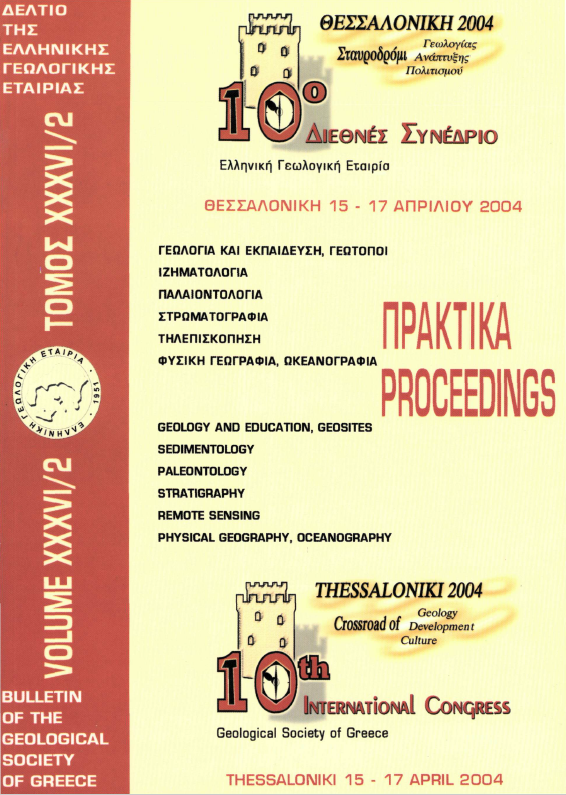STRUCTURING A G.I.S. FOR THE INTEGRATED APPLICATION OF GEOLOGICAL, HYDROGEOLOGICAL AND REMOTE SENSING METHODS AND TECHNIQUES IN THE STUDY OF GROUND WATER IN THE SITIA TECTONIC GRABEN
Résumé
This paper utilizes data from the first author's doctoral research on the geological and hydrogeological study of the broader area of the Sitia tectonic graben, using geological, hydrogeological, remote sensing and G.I.S. methods and techniques. In this work a G.I.S. which has been developed to include the information levels produced in the course of the research, is presented. The information levels can thus be appropriately correlated, with the aim of integrating the results of geological and hydrogeological methods and related in situ studies and measurements with evaluations of the potential of digital processing and analysis of remotely sensed images. Some conclusions of this study are documented in the paper.
Article Details
- Comment citer
-
Ρόκος Ε., & Ανδρώνης Β. (2018). STRUCTURING A G.I.S. FOR THE INTEGRATED APPLICATION OF GEOLOGICAL, HYDROGEOLOGICAL AND REMOTE SENSING METHODS AND TECHNIQUES IN THE STUDY OF GROUND WATER IN THE SITIA TECTONIC GRABEN. Bulletin of the Geological Society of Greece, 36(2), 885–893. https://doi.org/10.12681/bgsg.16837
- Rubrique
- Remote Sensing and GIS

Ce travail est disponible sous licence Creative Commons Attribution - Pas d’Utilisation Commerciale 4.0 International.
Authors who publish with this journal agree to the following terms:
Authors retain copyright and grant the journal right of first publication with the work simultaneously licensed under a Creative Commons Attribution Non-Commercial License that allows others to share the work with an acknowledgement of the work's authorship and initial publication in this journal.
Authors are able to enter into separate, additional contractual arrangements for the non-exclusive distribution of the journal's published version of the work (e.g. post it to an institutional repository or publish it in a book), with an acknowledgement of its initial publication in this journal. Authors are permitted and encouraged to post their work online (preferably in institutional repositories or on their website) prior to and during the submission process, as it can lead to productive exchanges, as well as earlier and greater citation of published work.



